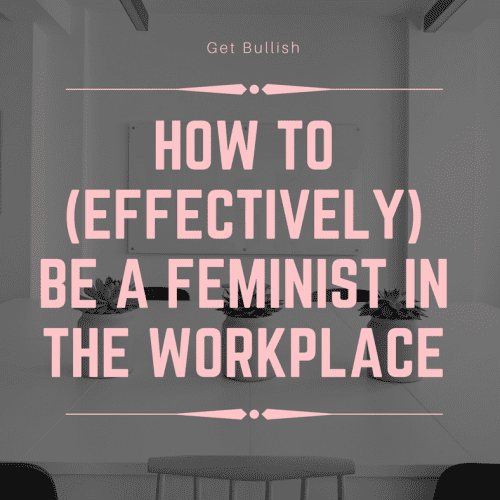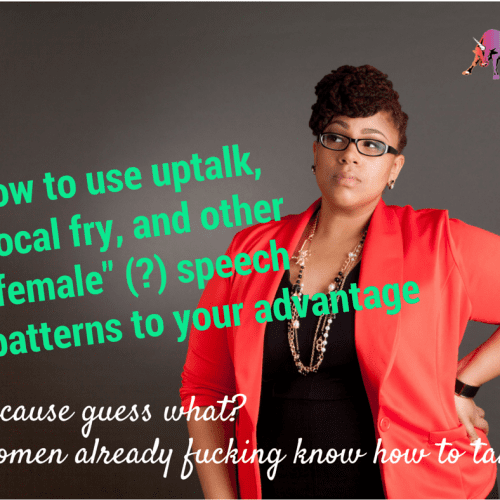This is a guest post by Bullish Conference 2014 speakers Julie Fogh and Casey Erin Clark of Vital Voice.
How do you feel about being interrupted? How do you feel about interrupting others?
These questions are as loaded as any communication issue we deal with in our line of work. And while there are certainly some people who feel completely comfortable both interrupting and being interrupted, we often hear statements like the following:
“I HATE IT.”
“It’s the only way people communicate in my office–and I can’t do it.”
“It’s so RUDE. Why is it necessary?”
Look, we’ve all read the studies about women in the workplace that try to address why women aren’t moving ahead or occupying the front offices or paid equally. Many of them focus on the idea that women just aren’t speaking up. WHY that happens is something that we could unpack for weeks–confidence, fear of getting it wrong, the patriarchy of the business world (#notallmen #yesallwomen), implicit sexism, etc., etc. It’s a multi-layered issue full of the greyest of the grey areas (50? I digress.)
As voice coaches, our mission is to make sure that women know how to speak up when they want to–in their specific environment, in a way that fits who they are and how they want to be seen and heard. And in our experience, one of the problems is simply this:
Many women don’t know how to interrupt effectively.
Let’s qualify that a bit: many PEOPLE don’t know how to interrupt effectively. Sometimes what is effective in one environment is not in another. Further, what is effective for some people backfires for others. (Hello Assertive Powerful Man/Aggressive Bitchy Woman conundrum!)
But the question of “How do I Interrupt?” is one of the most common questions we get asked. There isn’t a pat answer here, but we can help! As in everything we do, we approach this issue from two directions: practical skills are an important part of it, but the other (CRUCIAL) side is a little more organic. So let’s start there.
First of all: where are you from? What’s your background? How does your family/friend group communicate with each other? Many women we’ve worked have grown up in cultures where interrupting is considered incredibly rude, but work in environments where it’s necessary. If you identify as “nice” (and there’s nothing wrong with that!)–if one of your core values of communication tells you not to interrupt–then you probably have a harder time jumping that hurdle. Meetings may feel like a game of Double Dutch: waiting for exactly the right moment to jump in, and often finding someone else is just a hair ahead of you–maybe now saying exactly what you were going to say.
Or perhaps you have taken the jump, plunged in, and interrupted only to have someone accuse you of being rude. This can cause you to lose confidence in how you read a room. Doubly frustrating is being part of a culture that is ok with SOME people interrupting and not ok with OTHERS.
So first, we want to point out the following–especially if you are in one of those double-standard environments:
Instead of “I did something wrong”, try “Other people’s shit is NOT MY SHIT.”
You do not need to take care of someone else’s bruised ego. If someone does react badly to you jumping in–let that be their problem. Temper the shame response! If you’ve been respectful and on target, aggressive responses make the other person–not you–look bad.
That being said, some “Gender Judo” can come in handy in certain environments. Women are still expected by many to be nurturing and polite. It is possible to give them just enough of both, maintain your self-respect, and still get your point across:
- Acknowledge the previous point, acknowledge you are interrupting–this can be done politely without over-apologizing.
- Make your point and then circle back to the person you interrupted if you wish “Is there anything else you’d like to add?” Or- “Let me take it in a different direction for a moment; we’ll get right back to you.”
- Practicing interrupting by using the power to help someone else out. Empowering others is POWERFUL, gains you allies, and can increase your own confidence about speaking up. “I need to interrupt you for a moment; Sarah has some useful information pertaining to this point.”
There are also times when you just need to shut someone up–or take back the conversation when YOU are interrupted. These stressful situations are when our voices most often disappoint us–getting high pitched and strained, fluttery or breathless, etc.
Here are our three top tips for those moments:
1) You know that inhale that happens when you want to let someone know you want to speak? It’s a short gasp of breath, usually in the top of the chest. In the voice world, we call that a “prep inhale”. The thing about a prep inhale is that it ends up asking for space rather than taking space. Moments of stress are when you most need a full breath to power your voice. If you find yourself taking a shallow prep inhale, stop. Take a full breath.
2) You need to attract someone’s attention? Non-verbally, you can make eye contact to let them know you’d like to speak. Or try a simple, deliberate shift in position (going from sitting to standing, leaning forward or leaning back).
3) Really set your intention on who you are talking to and what you want to say. The clearer your objective for speaking is, the more speaking up will be about the substance of your words and not about yourself, your emotions, or your audience’s potential reaction.
Then, speak–full voice, without apology. And don’t mistake being outside of your comfort zone as “doing it wrong.”
To summarize:
- Check in with yourself on how you feel about interrupting.
- Observe your environment–how do people make themselves heard? What is frowned upon? What is rewarded?
- Separate yourself from someone else’s shit. Your audience’s reaction to you belongs to them.
- Read the situation- notice your own inner monologue and reaffirm why you need to speak.
- Take a full breath.
- Make eye contact where possible.
- Then, jump!
About the Authors: Julie and Casey were both frustrated with the gap in the speech coaching industry – in addition to being very male-centric, it seemed to thrive on the idea that there is one way to sound authoritative and in command. So they founded Vital Voice Training – a public speaking, communication, and voice coaching company focused on broadening the conversation about what ‘works’. Through private coaching, accent modification for ESL speakers, and group workshops, VVT helps women recognize their voice as a powerful and useful instrument, know that they get to choose what serves them and the environment in which they play, and own their fundamental right to be heard.
Register for the Bullish Conference, taking place November 14-16, 2014, here.








